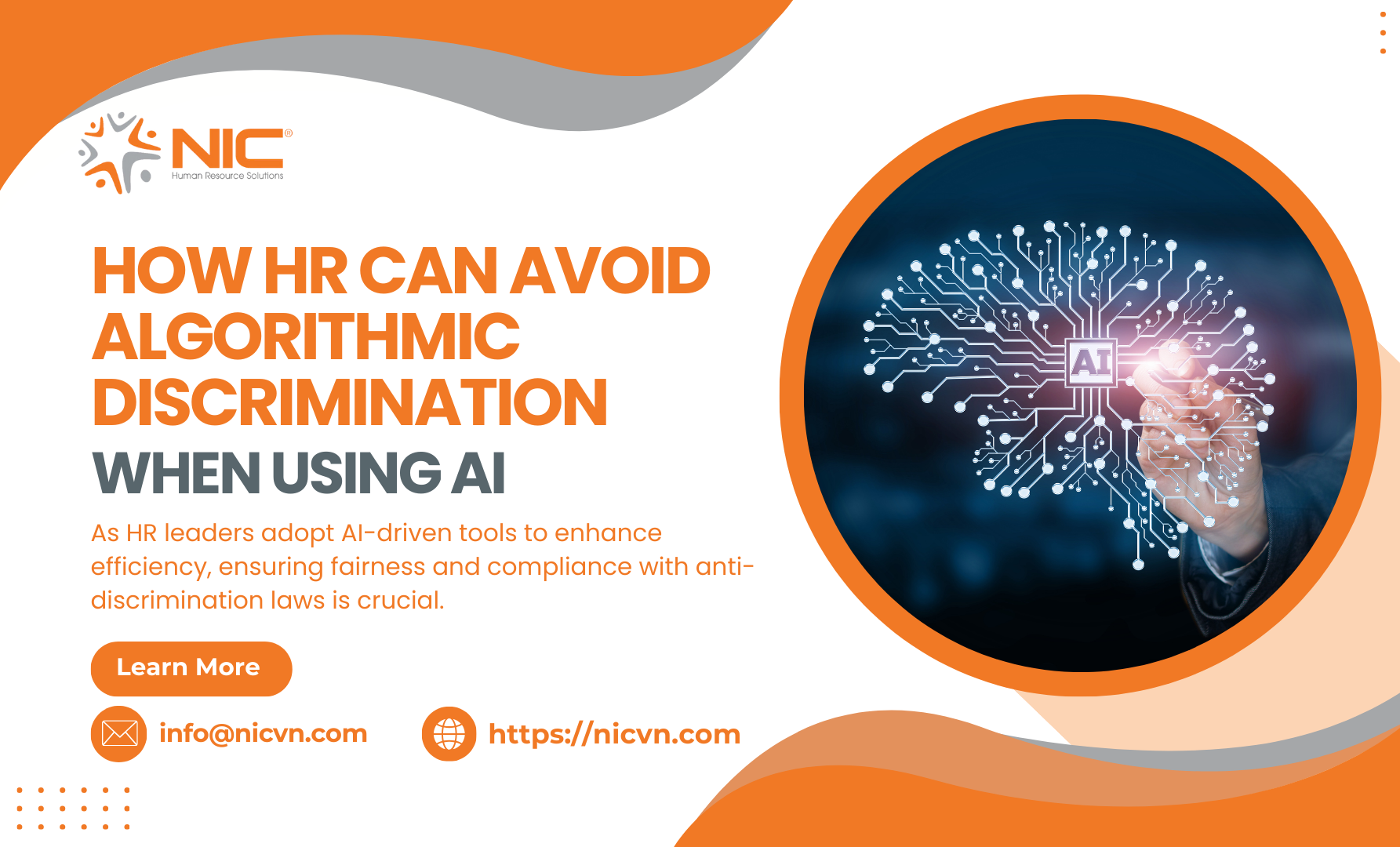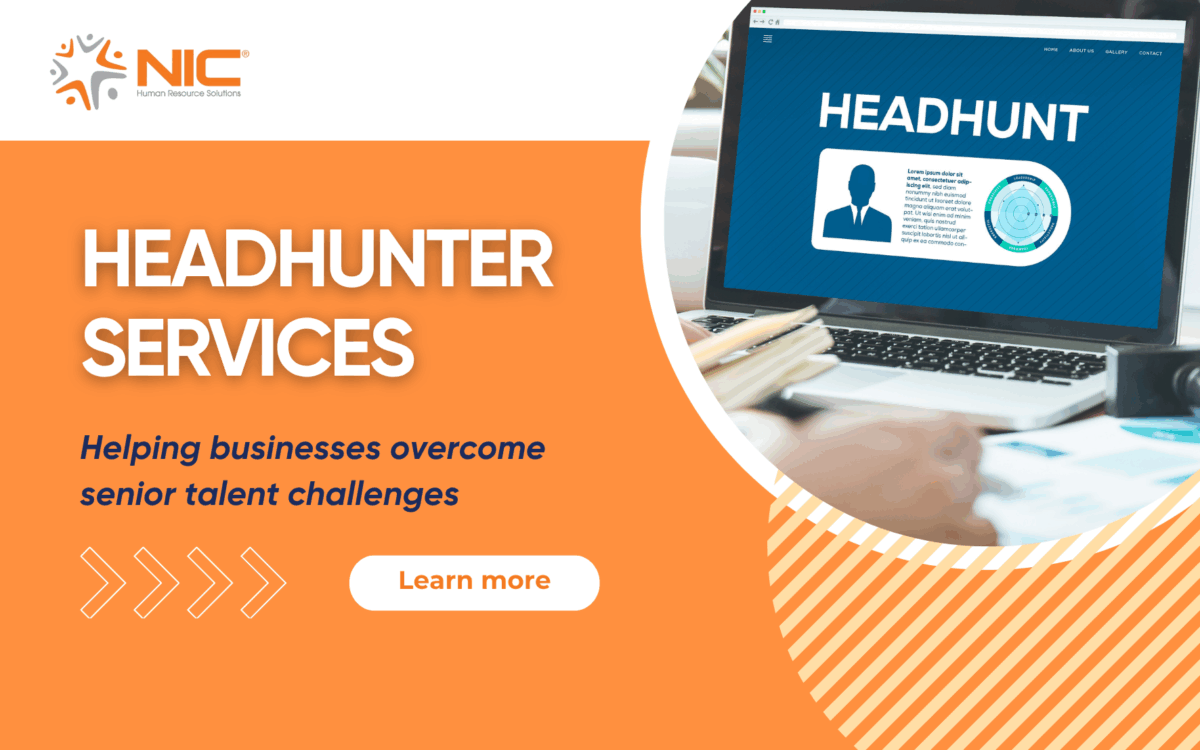How HR Can Avoid Algorithmic Discrimination When Using AI
07/02/2025
Artificial Intelligence (AI) has revolutionized hiring processes, streamlining recruitment tasks such as sourcing, screening, and predicting candidate success. However, its integration into human resources also raises critical concerns, particularly regarding algorithmic discrimination. As HR leaders adopt AI-driven tools to enhance efficiency, ensuring fairness and compliance with anti-discrimination laws is crucial.

What is Algorithmic Discrimination in Hiring?
Algorithmic discrimination occurs when AI systems produce biased or unfair outcomes. This bias can stem from:
- Skewed input data: Historical biases embedded in datasets may lead to exclusionary practices.
- Unfair algorithms: Poorly designed algorithms may inadvertently favor or disadvantage certain groups.
- Lack of oversight: Unchecked AI decisions can reinforce inequalities instead of eliminating them.
For example:
- Job-matching platforms using AI might disproportionately show ads to one gender for historically male-dominated roles.
- Resume screening tools may exclude candidates based on geographic criteria, unintentionally disadvantaging racial or socio-economic groups.
These scenarios underscore the potential for unintentional discrimination, even when employers seek to create fair hiring processes.

Best Practices for Preventing Algorithmic Bias
HR leaders must adopt proactive strategies for using AI ethically and effectively in hiring to avoid algorithmic discrimination. Here are actionable steps:
1. Assess AI Usage and Impact
- Review how AI tools are integrated into recruitment processes.
- Identify areas where decisions may unintentionally disadvantage certain groups.
2. Conduct Adverse Impact Assessments
- Regularly evaluate AI tools to ensure they don’t unfairly favor or exclude specific demographics.
- Perform assessments at implementation and throughout the tool’s lifecycle as technology and regulations evolve.
3. Work with Responsible Vendors
- Update contracts to include compliance with AI-related standards and ethical practices.
- Schedule regular audits and reviews to ensure vendors adhere to regulatory requirements.
4. Notify Candidates of AI Use
- Inform applicants when AI tools are used in the hiring process.
- Provide transparent communication about decisions and offer alternatives for those who opt-out.
5. Offer Alternative Processes
- Create accommodations for candidates who may prefer non-AI-based evaluation methods.
6. Stay Informed on Legislation
- Monitor developments in AI-related laws and seek legal counsel to navigate compliance requirements.
- Engage HR teams in ongoing education about AI ethics and evolving best practices.

The Role of Transparency and Ethics in AI
Building a culture of transparency and ethical AI use reduces risks associated with algorithmic discrimination and fosters employee trust. Key elements include:
- Continuous Education: Train HR teams to recognize and address biases in AI systems.
- Regular Oversight: Audit AI tools to ensure compliance with anti-discrimination laws.
- Open Communication: Establish clear policies for candidates and employees to understand how AI impacts hiring decisions.

The Path Forward for HR Leaders
Although federal AI legislation remains in development, existing anti-discrimination laws like Title VII of the Civil Rights Act of 1964 and the Americans with Disabilities Act already require fair hiring practices. HR leaders must:
- Be proactive in implementing AI ethically.
- Embrace tools that enhance recruitment without compromising inclusivity or fairness.
- Stay agile as new regulations emerge, ensuring their organizations remain compliant and equitable.
By fostering transparency and regularly evaluating the ethical implications of AI tools, HR leaders can harness the power of AI to drive efficiency while avoiding algorithmic bias.

Conclusion:
As AI continues to shape the future of hiring, HR professionals play a pivotal role in ensuring fairness and inclusivity. Proactive oversight, robust assessments, and transparent communication are essential to prevent discrimination and build trust. Let’s make AI an ally in creating equitable workplaces.
For contact and support:
Facebook: NIC Global – Human Resource Solutions
Linkedin: NIC Global Sourcing JSC
Website: www.nicvn.com
Email: info@nicvn.com
Hotline: 0981.23.43.76
Address:
- Hanoi Office: No. 3A Thi Sach, Pham Dinh Ho Ward, Hai Ba Trung District, Hanoi, Vietnam
- Ho Chi Minh City Office: Dakao Center Building, 35 Mac Dinh Chi, District 1, Ho Chi Minh City, Vietnam
See more:
Payroll service
Staffing service
EOR service





